Royal Visit
The first Royal visit for some time to Gibraltar, in this instance by HRH the Earl & Countess of Wessex, kicked off with a welcome from dignitaries at RAF Gibraltar
The first Royal visit for some time to Gibraltar, in this instance by HRH the Earl & Countess of Wessex, kicked off with a welcome from dignitaries at RAF Gibraltar


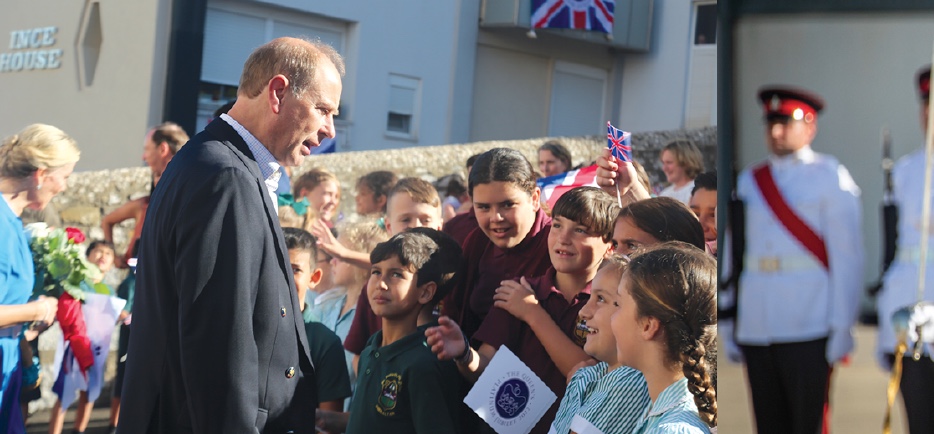


“When you tell a lie, you steal someone’s right to the truth” Khaled Hosseini, The Kite Runner Have you said

ARIES (Mar 21 – Apr 20) Your inner patience will be called upon this month, Aries. You may find it

It’s summer and it’s hot and the last thing you want to do is exercise, but you are determined to
Jo Ward talks to Professor Daniella Tilbury, Gibraltar’s first Commissioner for Sustainable Development and Future Generations.
Prof. Daniella Tilbury is a changemaker, educator and sustainable development leader who was the first woman in Gibraltar to hold the title of university professor and until 2018 she was the inaugural Vice-Chancellor and CEO of the University of Gibraltar.
What you may not know is that Daniella was instrumental in starting the global phenomenon that is Earth Hour, forming part of the World Wide Fund for Nature (WWF) Australia Board and team that created Earth Hour in Sydney in 2007. “Earth Hour started as something very small and not that ambitious,” she comments. “We stood on the shores of Sydney Harbour thinking that some of the lights may go off but we weren’t entirely sure and now, so many years later, it has become a global phenomenon with lights switching off all over the world at the end of March every year as a reminder of the importance of our reliance on the planet.”
Jo Ward talks to Professor Daniella Tilbury,
Gibraltar’s first Commissioner for Sustainable
Development and Future Generations.
Prof. Daniella Tilbury is a changemaker, educator and sustainable development leader who was the first woman in Gibraltar to hold the title of university professor and until 2018 she was the inaugural Vice-Chancellor and CEO of the University of Gibraltar.
What you may not know is that Daniella was instrumental in starting the global phenomenon that is Earth Hour, forming part of the World Wide Fund for Nature (WWF) Australia Board and team that created Earth Hour in Sydney in 2007. “Earth Hour started as something very small and not that ambitious,” she comments. “We stood on the shores of Sydney Harbour thinking that some of the lights may go off but we weren’t entirely sure and now, so many years later, it has become a global phenomenon with lights switching off all over the world at the end of March every year as a reminder of the importance of our reliance on the planet.”
‘Today 4 Tomorrow’
Daniella explains exactly what sustainable development is and why it is so important for the future of our planet. “There is a phrase I use that is ‘Today 4 Tomorrow’ and I think this phrase captures the spirit of sustainability,” she says. “Sustainability is like wearing a new set of glasses; the glasses help you see things very differently but above everything else they help you make a connection between what you do now and the future.”
Sustainability is often mistaken to be solely about environmental concerns but in fact although the environment has a lot to do with it, it is very much more than that. “It is about people and planet and definitely not about just waste, pollution or energy,” Prof. Tilbury states. “It is about a much bigger picture connecting with health, social justice and quality of life, conserving biodiversity, protecting our vulnerable in our community and being safe.”
It is true to say that Daniella is passionate about sustainability and that she has worked at various levels of engagement with this agenda throughout her career. “From Tanzania, Colombia and Madagascar where I worked in villages and towns on the ground, to working with agencies such as the police force in Asia trying to protect wildlife, environments and livelihoods and then to working at UN level, establishing treaties that protect the planet and going on to work in the areas of sustainability, such as climate change,” she explains.
Daniella was involved in international dialogues on climate change and was a delegate at the UN Climate Change Conferences held in Copenhagen (COP15) Marrakech (COP22) and Paris (COP21), Madrid (2019) and Glasgow (2021). She has also worked with corporate agencies, banks and financial institutions by ‘looking at ways in which they can make decisions that are better for people and planet’ Daniella explains.

Concern for the Future
With a wide range of experience in this area, Daniella says that her commitment is a concern for the future. “I am very passionate about the fact that we need a better future than the one that is currently facing us, and I almost feel that the future is running away from us and that it is going to be very different to what we are living through now.”
Prof. Tilbury cites changes in the way we work, eat, travel, generate electricity in our homes, and health care. “I don’t think there is an aspect of our lives that is not going to be touched by the future that is facing us.”
Negative Chaos
Agreeing that the world is in chaos at the moment, Daniella says that we need to take control and create an alternative future. “Climate change is going to bring such a different aspect to our lives,” she comments. “When you think about climate change you think about forests and fires but actually one of the biggest impacts is going to be the changing weather patterns of Gibraltar and a rise in sea levels, and we are surrounded by the sea.” She goes on to say that we have to be not just prepared for this but we have to understand that things will have to be organised in a very different way and that if we take control of it now, it will be much better for us in the future.
As part of her work as an academic leader in sustainable development, Daniella is credited with having developed the initial frameworks for education in this field. “One of the key things I do is work with how we bring about change – social, economic and community change – and I focus more at that level rather than individual change as the former can have a greater multiplier effect and help us get to where we need to be quicker.”
One of the key things, according to Prof. Tilbury, is understanding that change is not a linear process but that it is a bit like a game of snakes and ladders. “Snakes make things difficult and the ladders can accelerate the changes that we want to see, and whilst it is certainly not a game there are a lot of parallels with the reality of bringing about changes in our community.”
The COVID-19 pandemic has had an impact on all areas of our lives, including affecting sustainable development goals. Prof. Tilbury says that one of the key things it has highlighted is that we now realise how connected the world is. “It is important not to just think within your borders but to think beyond them and I think that the global pandemic alerted us to the importance of working together as an international community,” she states, going on to add that we will need to be doing that a lot more as we face some of the big wicked problems of the 21st century. “We really have to be connecting and building on our strengths and talents to solve these problems.”
Gibraltar and Radical Transformation
Prof. Tilbury explains what else can be done to effect this great radical transformation, particularly in Gibraltar. “We need to see things differently, not just to concern ourselves with decisions every day – but we need to see how our everyday decisions have an impact on the future, and my worry is that I don’t think we have a tradition of thinking ahead too much.”
Taking part in Gib Talks in 2016, Daniella spoke about ‘Creating a 2020 Vision for Gibraltar: Learning and Change’. “I spoke about the fact that maybe our colonial heritage has influenced the way we see the future and our confidence to get involved or plan ahead; we need to build future thinking capability and that commitment to be engaged as against to letting others do that for us.”
Sustainability could be at the heart of everything we do in Gibraltar. “It could become a key pillar in our decision making, and although we are a small place, we could have a lot of reach, impact and influence and show the world how it is done,” Prof. Tilbury comments.
Having worked in rural communities and agencies in Africa and Asia, in the corporate sector advising investment in Oceania and Europe, as well as with advising the European Commission and the UN on international agreements such as the Climate Change Paris Agreement, I ask Daniella how difficult it is to switch between policy and practice and which type of activity she prefers? “It is necessary for those in policy to be involved in practice – and vice versa – because there shouldn’t be a disconnection between legislating, planning, investing and doing, they need to come together, so it is not that difficult, but my preference is definitely working with young people.”
One of the initiatives Prof. Tilbury was involved in recently was The Futures Forward Academy, a leadership programme relevant to young people who wish to play a role in creating a sustainable future for Gibraltar. “I so much enjoyed working on this with them, connecting their current practice to the future of their professions,” she explains, adding that these very smart, very engaged young people that have their life time in front of them can see different possibilities to the ones that we are currently facing.
Education can bring about a fundamental shift in how we think and act and support the transition to a prosperous and sustainable future, however for Daniella it is much more than just changing those glasses that she mentioned above. “It is about building the ability in people to do something about it – so on one hand we get Greta’s (Greta Thunberg) generation that are very frustrated because they have high levels of awareness and they know about climate change and about things that are going ahead, but they want to make a difference and they don’t know how to because they haven’t been taught by their schools or communities about how to influence the way decisions are taken – so they protest on the streets.”
For Daniella education is not only about understanding the problem, but it is also about giving young people the capability to actually make that difference. “In fact it is not just about raising awareness anymore because that in itself can cause frustration, concern, and anxiety.”
“We need to give the ability to young people and to others to actually bring about those changes and that just doesn’t happen because you have commitment, it is really about understanding how change can happen.” Prof. Tilbury’s opinion is that it is not as simple as making the case to decision-makers to do something, everything has to align and there needs to be an expectation as well as the support from people across the community.
“There are a lot of changes that we can put into place now that will have a significant impact on our future,” she says.

“When you tell a lie, you steal someone’s right to the truth” Khaled Hosseini, The Kite Runner Have you said

ARIES (Mar 21 – Apr 20) Your inner patience will be called upon this month, Aries. You may find it

It’s summer and it’s hot and the last thing you want to do is exercise, but you are determined to
The Office of Fair Trading has announced a new way to get in touch with the Consumer Protection Team.

Gibraltarians with a request or concern can now get answers using WhatsApp.
This more convenient, quicker way to get in touch is expected to attract a wider audience to engage with the team, particularly younger consumers.
The eam will use WhatsApp to provide guidance about consumers’ rights and to give general assistance relating to queries raised. It should be noted however that any matters that require the Team to carry out specific investigations or other escalations would require a more formal line of communication with the OFT by email.
It’s being trialled for six months to allow the OFT to assess its functionality and effectiveness.
The WhatsApp number is +35056002998.
You can, of course, still get in touch using all the other methods, outlined below.
Tel: 20071700
Email: consumer.protection@gibraltar.gov.gi
Visit: www.oft.gov.gi or search for OFT Gibraltar on social media.

“When you tell a lie, you steal someone’s right to the truth” Khaled Hosseini, The Kite Runner Have you said

ARIES (Mar 21 – Apr 20) Your inner patience will be called upon this month, Aries. You may find it

It’s summer and it’s hot and the last thing you want to do is exercise, but you are determined to
All is set for the biggest women`s Beach Soccer event in Europe and the world, the Euro Winners Cup to kick off in Nazaré, Portugal. The seventh edition, will begin on Monday 6 June and end on Sunday 12, comprised of three Round Robin matchdays (6, 7 and 8 June) and followed by a knockout stage, and the final being played on Sunday 12 June.
Gibraltar Wave FC is the first Gibraltar club to participate in this world class tournament which we hope will spur not just football players but all sportsmen and women in Gibraltar to take up this sport as a way of keeping healthy in this wonderful lifestyle sport.
This is the One sport in which Gibraltar can, in the near future, be one of the top nations. Beach Soccer is on the verge of taking off as one of the most spectacular sport in the world.

Beach soccer returns to the European Games after proving to be a very popular sport at both editions Baku 2015 and Minsk 2019. In 2023, football fans worldwide will have the opportunity to experience all Beach Soccer has to offer, including top-class competition and a fantastic atmosphere.
President of Beach Soccer Worldwide Joan Cusco (ESP) said: “It’s great to see beach soccer occupying such an important place at the European Games. We are honoured to be a part of the Olympic family and to have the opportunity to feature in an event as prestigious as the European Games is something that makes us very proud. We received a lot of positive feedback during and after the Games in 2019, and we are really thrilled to have the opportunity to stage another amazing spectacle and showcase what beach soccer is all about.”
The third edition of the European Games is set to take place in Kraków and the regions of Małopolska and Śląsk in Poland from 21 June to 2 July 2023.
The European Games in 2023 will be an important stepping-stone for the growth of Beach Soccer worldwide and the experience that Lauren Parkes, Narges Mararat, Lauren Tomsett, Megan Garcia, Beverley Yee-Kwan Shing, Tiana Garcia-Tapper, young Julia Louise-Lima, Melissa Ann Mor, Kierra Manique Scalercio, Jennifer Alexandra Ramirez Araguas, Kelly McShane and the coaches Ernest Tomsett, Anthony Celecia and Sally Barton will get will be invaluable for the growth of Beach Soccer in Gibraltar.
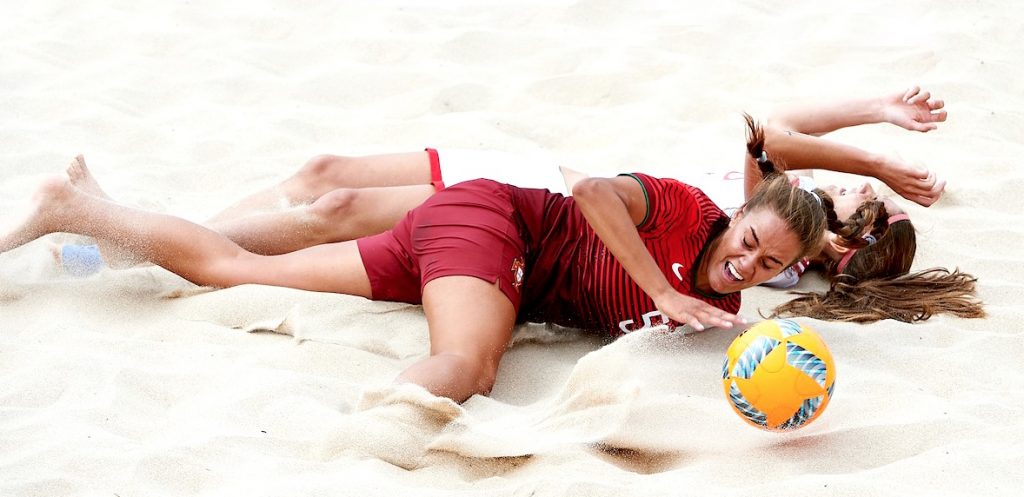
Now, on to you sporty fans, follow Euro Winners Cup, the UEFA Beach Soccer Champions League closely and #FireYourPassion for this spectacular sport and Gibraltar Wave FC:
Women’s Euro Winners Cup Teams for 2022 are:
Gibraltar Wave FC (GIB), Newteam Beach Soccer Brussels (BEL), SC Rappiranhas (SUI), Kylävainion Päällikot (FIN), Bavaria Beach Bazis (GER), CSO Amnéville BS (FRA), Marseille Beach Team (FRA), Beach Soccer Zeeland (NED), AIS San Javier (ESP), Higicontrol (ESP), Cáceres Playa (ESP), Terrassa Bonaire BSC (ESP), CD Futbol Playa Huelva (ESP), ACD O Sótão (POR), AD Pastéis (POR), Associação Desportiva “Nazaré 2022” (POR), FC10 Ladies (POL) are the teams taking part.
See you all on the surface most associate with paradise and stay tuned here in Gibraltar Insight for the July issue on our experience at the UEFA Beach Soccer Champions League.

“When you tell a lie, you steal someone’s right to the truth” Khaled Hosseini, The Kite Runner Have you said

ARIES (Mar 21 – Apr 20) Your inner patience will be called upon this month, Aries. You may find it

It’s summer and it’s hot and the last thing you want to do is exercise, but you are determined to
The Gibraltar FA’s new School Coaching team has been visiting a selection of local schools in recent weeks, delivering fun themed football sessions tailored towards all schoolchildren no matter what their football knowledge and skill levels may be.
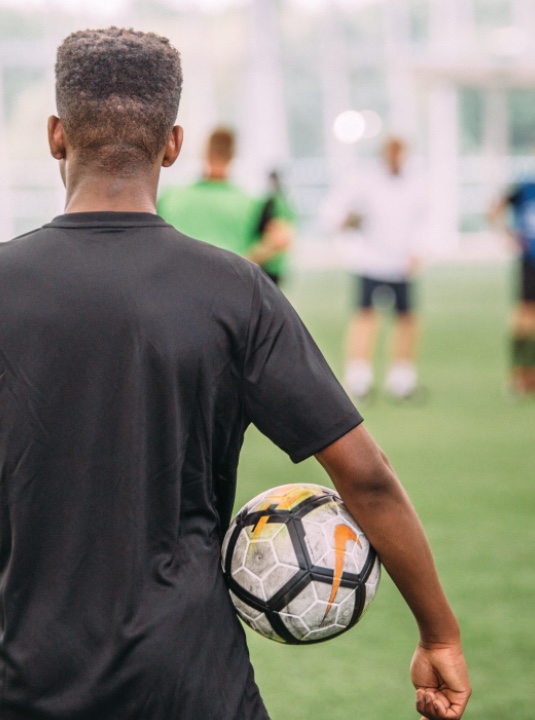
Under the guidance of the Association’s Football Development Officer, Scott Wiseman, the team includes Gibraltar Men’s National Team Players Jayce Olivero, Julian Valarino, Anthony Hernandez and Kian Ronan (absent from the photo) alongside Chris Ward, Jake Victor, Kaira Sene, Alan Martin and Dan Bent (also absent from photo). Players from the Gibraltar Women’s National Teams will be joining the programme shortly.
The Association’s school team have begun regular sessions this term during daily P.E. sessions at Notre Damn Lower Primary School, Governor’s Meadow Lower Primar School, St Joseph’s Lower Primary School and Bishop Fitzgerald Upper Primary School with other schools around Gibraltar joining the programme in the new school year.
As part of the programme the Gibraltar FA will be providing the schools with equipment such as footballs and bibs for their use.
The Gibraltar FA’s Football Development Officer, Scott Wiseman said:
“We are delighted that our Schools Programme is up and running and I would like to thank the schools and the Department of Education for all of their help and assistance.

As the new school year starts in September, we want to be able to have our coaches visit all local schools, to make fun and enjoyable football an integral part of the P.E. curriculum, for children of all footballing abilities. And by using our Men’s and Women’s National Team players as role models all those aspiring young footballing stars of the future can enjoy being coached by our internationals as well as look up to and dream of one day emulating them.
I would also like to thank all of the teachers, at all of the schools we have visited so far, and those we are planning to visit in the future for the amazing welcome they have given all of our coaches and integrating our team into their P.E. sessions.”

“When you tell a lie, you steal someone’s right to the truth” Khaled Hosseini, The Kite Runner Have you said

ARIES (Mar 21 – Apr 20) Your inner patience will be called upon this month, Aries. You may find it

It’s summer and it’s hot and the last thing you want to do is exercise, but you are determined to
“Our mission is to give people a way to eat less meat with the focus on living sustainably in harmony with, and respecting, nature and our bodies and maintaining a healthy eating lifestyle.”
Growing up in the Oxfordshire countryside, surrounded by farms and in a family who ate a lot of meat, especially Sunday roast dinners, Joanna never enjoyed it or how her body felt afterwards, so it is no wonder that she went on to become a plant based pioneer.
Knowing that she wanted to explore life beyond the UK, after completing her university studies in the USA in International Relations which also resulted in her speaking five languages Joanna, who had been undertaking marketing work to earn money to pay for her studies, was then headhunted by Coca Cola.
In a stellar career that took her from Occasion Marketing Manager for East & Central Europe Division for Coca Cola based in Vienna to Global Head Marketing & Capabilities for UBS and then Group Director of Marketing, Innovation & Business Ventures worldwide for Fonterra based in New Zealand, Joanna gained a huge depth of experience and knowledge that went on to serve her well when it came to setting up her own company.
“I stayed with Coca Cola for nearly eight years working with them in the UK and Hong Kong where I helped set up all of the innovation processes for them in China, and it was when I moved to Asia that I started to work quite seriously in innovation,” Joanna explains. It was a move from soft drinks to working with more healthy, non-carbonated beverages that heightened her profile in her innovation background and led to Joanna going on to work for Danone in Asia, living in Singapore.

Joanna then worked for UBS running global capabilities for marketing in Switzerland, but she wanted to get back into food and when approached by Fonterra, the biggest dairy company in the world as well as being the biggest cooperative of farmers, she made the move to New Zealand on her own with her five month old and two and a half year old to take on a big role running global innovation for the $8.5 billion ingredients division. “I was responsible for 400 people in a combination of marketing and innovation, research and development,” she states.
At the end of her contract in New Zealand Joanna came back to Europe. “I was separated with two young children and I needed to find a way to look after them and work at the same time and I came to Spain because the culture is very family oriented and was more similar to New Zealand.”
“My children didn’t like meat and neither did I, and I was frustrated that the only vegan food I found in the supermarket was very processed. I wanted to give my children and families like myself a way to eat wholesome protein rich food, made with real vegetables.”
It was while doing some consulting marketing innovation work for a vegan company based in Northern Europe producing processed vegan chicken & pork products, that Joanna became certain there had to be an alternative – and that led to the inception of BLOX.
“BLOX is based on the principles of the Mediterranean diet, made fresh every day from locally sourced vegetables, olive oil and pulses. We created BLOX the artisanal way, focussing on flavour and texture. BLOX is 100% vegetable based, with no animal products, no allergens, no preservatives, no colorants or chemicals. It’s pure, delicious, nutritious, healthy and whole,” Joanna states. “Our strength is that we understand how to embrace their natural textures and flavours to innovate and create a new sustainable base for food and an alternative to eating meat.”
The range consists of fresh vegetable meats, ready-to-eat vegetable based products and BLOX FIT – a whole range based around fitness that has been developed in conjunction with a nutritionist and a personal trainer.
“The Mediterranean diet is the healthiest diet in the world – so I started working with top Spanish chefs to create a new meat alternative based on the principles of the Mediterranean diet. It has taken five years to build the BLOX business, and a range of 100% vegetable based, vegan food products that are unmatched in the world.”
BLOX is the first Mediterranean vegetable meat in the world that follows the basic principles of the Mediterranean diet. Joanna comments that BLOX provides a tasty, healthy and sustainable source of protein and fibre, that’s low fat, and provides important vitamins and minerals, such as Calcium, Zinc, Iron, Magnesium, as well as B12 and DHA.
“We care about our families, our environment and respecting the diverse animal life on the planet, so everything we do at BLOX has to align with our 3 basic principles: delicious food for families, that’s healthy, and sustainable from plant to plate,” Joanna says.
More people are understanding the health benefits of a plant-based diet and buying more plant-based foods than ever before, but creating a viable alternative to meat is a courageous move.
All BLOX foods are made at their installation at the Mercado Ingeniero Torroja, the site of the original fruit and vegetables market in MercaAlgeciras. The site has been rehabilitated and it’s here Joanna and her team are opening an innovative “CASA BLOX” shop where customers will be able to not only pick up their BLOX food products such as fresh vegetable meat and readymade foods such as lasagne and moussaka, but also where from 8 pm each evening you will be able to get a fast food takeaway in the form of their BLOX burger menu.
“Convenient vegan food based on fresh vegetables is something that has been missing and if you really are focused on sustainability you also have to think about how you produce it, how you package it and how you distribute it and that is something that has been missing as well,” Joanna explains. “Our focus has been about disruptive change, going back to the community, using local suppliers and fresh vegetables based on the Mediterranean diet, packaging that uses little to no plastic and is biodegradable, and on delivering BLOX food to people in a way that has zero carbon emissions using our electric vehicles.”
Joanna’s vision is to make it easy for people to buy BLOX. “We want to be based on the edge of cities and be part of the local community working side by side with local vegetable farmers and within easy reach of local consumers. Our vision for BLOX is that it can be an alternative to the meat butcher, where you can buy freshly made BLOX vegetable meat and BLOX prepared meals that go straight in the oven or microwave ready to eat, and for people who don’t want to travel, we make home deliveries for healthy hot and cold food hassle free.”
What about the future of BLOX? “It’s too early to talk about our next project as we are just starting with our pilot in the Campo de Gibraltar in Algeciras, but we have big plans and are excited about the future and seeing BLOX around the world”.
The good news is that BLOX vegetable based foods will also be available to be delivered straight to your home in Gibraltar by ordering directly from the website”.
www.BLOXfoods.com

“When you tell a lie, you steal someone’s right to the truth” Khaled Hosseini, The Kite Runner Have you said

ARIES (Mar 21 – Apr 20) Your inner patience will be called upon this month, Aries. You may find it

It’s summer and it’s hot and the last thing you want to do is exercise, but you are determined to
Are you Cyber Resilient?
Are you sure?
How do you know?
What should you do about it?
Cyber, cyber, cyber…. Blah, blah, boring… We all know about it. We have all heard about the risks and the attacks that happen to other businesses and people. We know it’s a threat. You may even have experienced or know someone who has experienced some form of an attack?
Cyber-attacks are a modern-day plague on society. It impacts businesses, people, and us all in one way or another. Frighteningly, it also funds international crime and global terrorism. Cyber-crime causes significant impact and distress to you and others, either knowingly or unknowingly.
The sad thing is cyber-attacks and criminals are here to stay and can no longer be something to be ignored. Not being attacked and being lucky to date, does not mean you will be lucky in the future.
Technology and artificial intelligence continue to evolve at an alarming rate, and shows no signs of slowing down. This evolution coupled with the reduction in component prices and the prospect of greater connectivity and data transfer rates promised by 5G technology will result in more “things” becoming “smart”, digital and automated and joining the realm of the Internet of Things. Smart things require connectivity to a network to enable them to be controlled remotely by devices. Any network connection presents an access point for a cyber-attack.
Cyber Criminals target the weakest prey. They are motivated by two things: money and freedom aka: “not getting caught.” Unless you have something that a cyber-criminal wants at all costs, the harder you are to hack the more likely they are going to go elsewhere. Their business plan is simple: minimum effort for maximum reward from as many people or businesses as possible.
So, at a basic level, simply being harder to hack than the next business and/or person is a sensible approach. But what does hard to hack look like and how do you know how effective it is for your situation?
You may consider that your business is doing all the right things. But are you sure? How do you know? Who is providing your advice? Is your advisor a qualified cyber expert? Or as is often the case through necessity, are they someone who has been double or triple hatted? Are you tracking up-to-the-minute cyber threats? Do you know what is unfolding this very minute and may be affecting your networks, mobile applications, web portals and collaboration tools?
All too often we hear “yes we have addressed cyber security, we have anti-malware, firewalls, VPNs and have conducted a penetration test 3 years ago and a 45-minute training package.” All of this is positive, but relative to modern threat it is probably only at the absolute minimum level that must be considered, and it most probably will not make you sufficiently hard to hack for a criminal to go elsewhere.

But what is enough? What does good look like?
The best approach to achieving the greatest resilience is a comprehensive approach to all cyber threats, obviously… But what does comprehensive look like in cyber security and who decides?
A comprehensive approach involves mitigating appropriately each type of cyber threat, of which there are many. To enable the threats posed by cyber-attack to be easier to understand and aid management, the subject has been broken down into several threat areas. The threat areas are presented as a framework that businesses can use to ensure a comprehensive approach.
There are several international organisations across the globe that have established frameworks for managing cyber resilience. These frameworks have evolved over time and in response to emerging threats, market experiences, academia, and industry best practice.
To truly understand your resilience, it is highly advisable to contract the services of a specialist information security company who are experts at gauging the resilience of your business. They will be able to tell you what you are doing well, what needs development and where you are holding significant risk – which may even identify you are presently in breach of data protection and/or other regulation or are not fulfilling the terms of your insurance. A good company will then provide you with a roadmap for developing resilience, understanding that this will take time and planning and not every business has immediate budget available. CSS Platinum can assist with this.
Finally, it is important to understand that this is an ongoing commitment. Just as today’s cyber security framework evolved over time and in response to events, cyber threats continue to evolve, and new threats emerge every hour. The impact of this is that cyber security must become a cultural consideration in business and people in their private lives. Just as one considers the health and resilience of their body to lead a full and fulfilling life, so now must that business/individual take constant consideration in their interaction with the digital and cyber domains.
Cyber security and resilience is now and forevermore a life skill and one that everyone should take some time to learn. As the adage goes, prevention is always better than cure. Act now, rather than experiencing regret later.”
Be Disciplined, Be Hard to Hack, Be Safe.
Michael Wills is co-founder and chief data officer for CSS Platinum. For further information on the company and the services it provides to Gibraltar businesses and the international yachting industry, please visit https://cssplatinum.com and/or email support@cssplatinum.com.

“When you tell a lie, you steal someone’s right to the truth” Khaled Hosseini, The Kite Runner Have you said

ARIES (Mar 21 – Apr 20) Your inner patience will be called upon this month, Aries. You may find it

It’s summer and it’s hot and the last thing you want to do is exercise, but you are determined to
For time immemorial, the Pearl Rocks have been the curse of ships entering the Bay of Gibraltar. This was especially so in the days of sail, when ships were at the mercy of the wind and current. The list of victims of this natural navigation hazard is long and no doubt will remain silent, like a maritime spider, waiting quietly for its next victim to fall into its web of razor sharp rocks.
The rocks are situated some 1500 meters south of Punta Carnero and extend about 1000 meters west from the shore.
Most groundings have been the result of the weather, mechanical faults or enemy action, however, in the case of HMS Agincourt, the weather was fine, visibility good and no cause for concern.
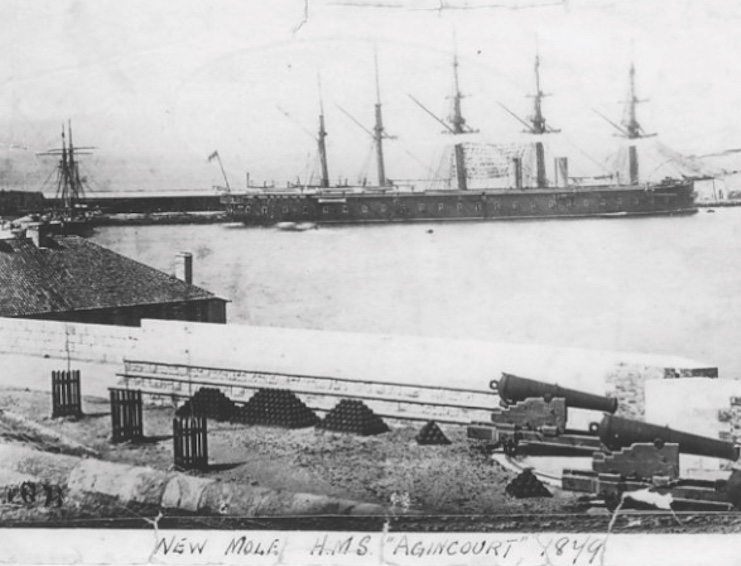
Shortly after 0900hrs on the morning of 1st July 1871, seven war ships of the Channel Fleet left Gibraltar under Vice Admiral Wellesley CB on HMS Minotaur under the command of Captain Beamish. The ships formed two columns, HMS Minotaur (Capt. Wells) leaving first to head the port column, under the Admiral, followed by HMS Agincourt to lead the starboard column. These were followed my, HMS Hercules (Capt. Lord Gilford), Warrior (Capt. C.Glyn) Northumberland (Capt. Alexander) and Pigeon alternately forming the starboard and port columns.
The frigate, HMS Agincourt flew the flag of Admiral Wilton and lead the starboard column. This ship was launched in March 1865 as a Minotaur Class “Iron-clad,” which means that the wooden hull was reinforced with armour plating. At 407ft in length and displacing 10,027tons, she was a large ship for the primitive horizontal steam engines driving a single screw. In order to handle the sails and man the 4 x 9” and 24 x 7” muzzle loading guns, she had a crew of 800 men.
The squadron steamed majestically out of the bay and turned onto a heading of 225°or West South West towards Tangier, as requested by Staff Commander Kiddle, the fleet navigating officer, in the Minotaur.
As the ships formed up, and taking sightings from the San Roque and Cabrita clearing points.
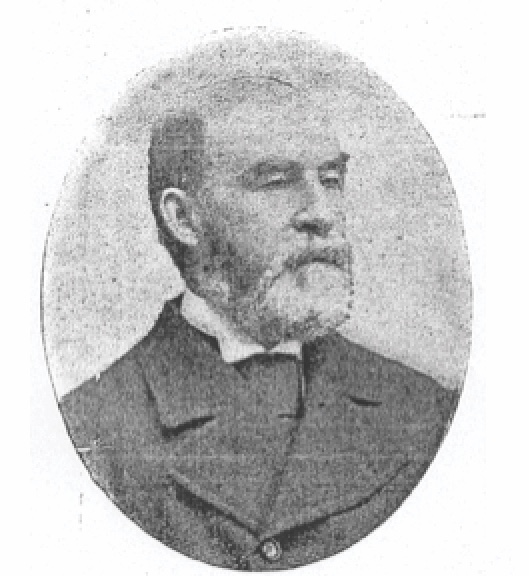
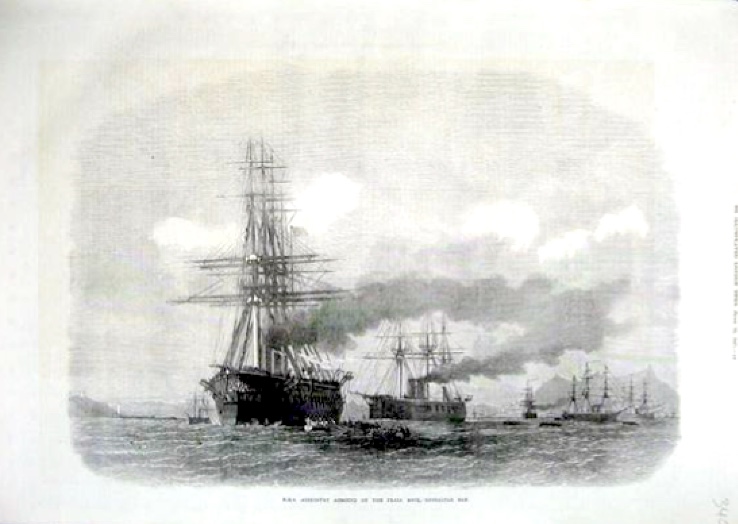
They steamed at 6 knots in order to save coal. The navigating officer seemed unaware that there was a westerly current running at 4 knots. The Agincourt, under compass setting, gradually drifted out of line and was described later as having drifted seven cable lengths (1400ft) off away from the flagship instead of four (800ft).
Under normal circumstances, the Flag should have led the starboard column, which was the line closest the shore, as was the custom.
Astern of Agincourt was HMS Warrior. Commander May on board this ship registered his concern to the Captain and Officer of the Watch on seeing the Agincourt drifting towards the coast, a statement later disclaimed by Lt. Hoghton, the officer in question, who claimed that he only remarked that they were to close to the shore.
Many other officers and crew claim that the Agincourt was off station.
The charts at the time, showed the Pearl Rocks, however it was claimed that they did not show the full extent of the reef, in fact following the incident, the Admiralty carried out a survey of the area.
The first report of the plight of the Agincourt arrived in Gibraltar at 1300hrs. Reports claimed that the frigate was on the Pearl Rocks and HMS Hercules was standing by. HMS Helicon, Lee and Redpole were immediately ordered to get up steam while the tugs Lion Belge and Dockyard tug Hercules were already alongside. The three warships left shortly after towing two lighters and two punts and HMS Lee was due to pick up some more before heading out to the scene. The rest of the fleet continued to cruise the Strait.
The Agincourt was on the southeast edge rocks, up to her second mast on the starboard side and the engine room to port. In order to lighten the ship, all her guns, shot, anchors and anything heavy was being transferred to the punts and lighters. The coal was thrown overboard, no doubt to the delight of the local inhabitants as some would probably wash ashore. The lighters were being unloaded in the dockyard and Rosia Bay in the early hours of the morning when the wind veered to the East causing concern for the safety of the Agincourt, so the anchors were returned and secured to the stern in order to stop the ship swinging and becoming even further wedged on the rocks.
An anchor was put out from the Agincourt’s port bow by the Lion Belge to 100fathoms (600ft) in a south westerly direction. The stern of HMS Hercules was the attached to the stern of the stranded vessel by a 5 fathom (30ft) chain from each of the anchor hawse pipes to the stern of Agincourt. As the tide reached maximum, and the Agincourt made as light as possible, the Hercules took the strain and began to pull. A shudder passed through the ship as the vicious rocks gave up their prey. The tugs then came into play and helped the Hercules as she slid into the sea. The Spanish paddle sloop Linier also helped in the tug of war, breaking a hawser but was soon able to replace it and continue with its assistance. Unfortunately, the Agincourt slid off the rocks and collided with the stern of the Hercules, but the damage was minor.
The tugs took charge of the frigate and towed it to anchor off Sandy Bay where HMS Minotaur was riding at anchor. Next morning, HMS Minotaur, Hercules and Agincourt came round from Eastside and into the dockyard, the latter coming alongside in order have the hull examined, re-embarking her guns and ammunition and re-coaling.
As HMS Hercules came into harbour she was greeted the sounds of a band with the cheers of the ships in harbour.
An anchor, left behind, was picked up by a barge belonging to Messers Garese.
A few days later, the Agincourt accompanied the Minotaur, Valorous and Helicon set sail for England.
At the Court Martial that followed their arrival in England, Staff Commander Kiddle, the Fleet Navigating Officer confirmed that the Agincourt had drifted off station, but confirmed that the use of San Roque and Cabrita marks were unreliable for navigation. Admiral Wellesley, in his evidence, stated that both columns had been swept towards Pearl Rock whereas the navigating officer was under the impression that the current was to the east and that the incident was an accident. Staff Commander MacFarlane of the Northumberland, stated that the course that was set was very close and that the slightest set of the current would take her on the shoal. He also considered that the Admiralty Sailing Directions were a contributing factor. Captain Glyn of the Warrior, considered that the course of WSW and the slow speed was very dangerous for a large ship like the Agincourt. At slow speeds, the ship’s rudder does not react effectively and can easily be pushed off course by the current.
Under normal circumstances the Admiral would lead the Starboard column, which was the side closest to the shore. When queried, Wellesley explained that he had Sir J.D Hay and his family on board. He intended to transfer them to the Pigeon which would take them to Tangier. What his had to do with the position of the Minotaur is unclear.
The inquiry lasted ten days. The verdict was as follows:-
“Having heard the evidence in support of the charge, as well as what the prisoners have offered on their behalf, and having maturely and deliberately weighed and considered the same, the Court is of the opinion that as regards each of the said prisoners the charge has been proved; but, considering the circumstances under which the Agincourt was then being navigated, the Court only adjudges the said Captain Beamish and the said Staff Commander Knight to be severely reprimanded and admonished to be more careful in the future; and the Court only adjudges the said Lieutenant Bell to be admonished to be more careful in future; and that Captain Beamish and Staff Commander Knight are hereby severely reprimanded and admonished, and Lieutenant Bell is hereby admonished.”
Although Vice- Admiral Wellesley was a distinguished officer and served his country well, it was regrettable that he would be asked to strike his flag. Rear Admiral Wilmot, of the Agincourt was to be superseded in his command. Captain Wells of the Minotaur, Captain Beamish of the Agincourt were dismissed their ships, Staff Commander Kiddle was put on half pay
Initially, the press feared that the investigation would be “Burked.” This term originated from the trial of William Burke, a body snatcher, who, with his companion murdered 15 people and sold the bodies to a doctor. Their method of killing was to compress the chest and smother the victim. He was executed in Edinburgh in 1829. From this “to Burke” became synonymous with the suppressions of information to speed the enquiry. The Press came to the conclusion that the fault lay with the flagship and that a searching inquiry should follow. In fact a survey was carried out shortly afterwards, by the Navy, covering the Pearl Rocks

“When you tell a lie, you steal someone’s right to the truth” Khaled Hosseini, The Kite Runner Have you said

ARIES (Mar 21 – Apr 20) Your inner patience will be called upon this month, Aries. You may find it

It’s summer and it’s hot and the last thing you want to do is exercise, but you are determined to
It’s been a long journey from the days of hand-drawn illustrations and the infancy of new-fangled technology Desktop Publishing. 30 years on, our online reach is over 400,000, bringing a window to the world of our place we call home.

See the first edition in its entirety at
https://gbz.media/June1992GBZinsight

“When you tell a lie, you steal someone’s right to the truth” Khaled Hosseini, The Kite Runner Have you said

ARIES (Mar 21 – Apr 20) Your inner patience will be called upon this month, Aries. You may find it

It’s summer and it’s hot and the last thing you want to do is exercise, but you are determined to
As the weather begins to get sunnier, and our hours with daylight become longer, it is good to revisit those key steps to protect ourselves against the sun’s ultraviolet (UV) rays. It is important to find the balance between protecting ourselves from the sun’s harmful effects and getting enough vitamin D from the sunlight.
Sunburn does not just happen on holiday, you can burn even on a cloudy day. In order to protect yourself: •
Try to spend time in the shade when the sun is strongest (usually between 11-3pm).

“When you tell a lie, you steal someone’s right to the truth” Khaled Hosseini, The Kite Runner Have you said

ARIES (Mar 21 – Apr 20) Your inner patience will be called upon this month, Aries. You may find it

It’s summer and it’s hot and the last thing you want to do is exercise, but you are determined to
